The Vallenato Festival might as well be the Coachella of Colombia. This multi-day festival brings together some of the biggest names in Colombian music for a weekend full of rumba, cumbia, and of course, aguardiente. It’s tough competitions
But there are plenty more reasons why the Vallenato Festival is one of Colombia’s most notable celebrations. This popular folk-music style was born along the Colombian coast, and combining elements of accordions, box drums, and rasps, is a distinct genre not found anywhere else in the world.
At the Vallenato Festival, the genre takes on a life of its own. Fans travel from around the world to see some of the biggest names in Vallenato, and performers from around the country try their hand at winning the title of Rey de Vallenato, or the Vallenato King. The multi-day festival is certainly one of the best things to do in Colombia, and a true look at costeño culture in its glory.
But here’s the thing – the Vallenato Festival has yet to exactly make it onto the gringo scene. That’s why I’ve put together this extensive guide, from a gringa who attended the festival solo, to break down everything you need to know to visit this extraordinary event.
This site uses affiliate links to share products that I use and love! If you click on one of the links I may receive a small commission at no additional cost to you. This helps keep my site up and running — thank you!
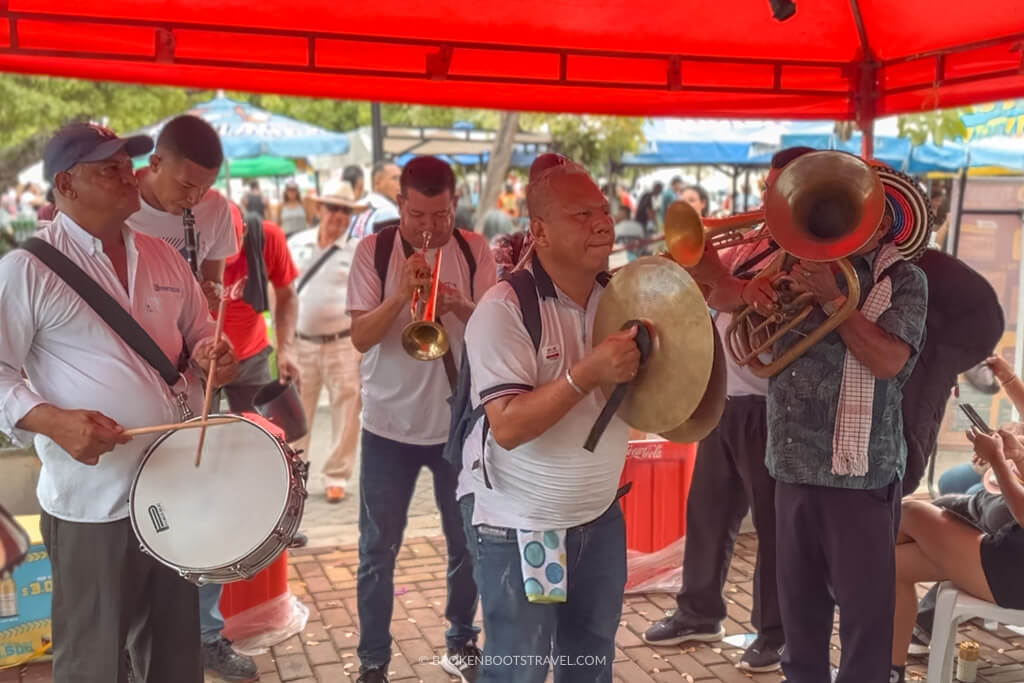
Colombia Quick Links
✈️ Flights – Use Kiwi.com or WayAway to find the cheapest and fastest flights to Colombia
🛏️ Accommodation – Find the best places to stay throughout Colombia on Booking.com
✅ Get Insured – I personally use Safety Wing Nomad Insurance for my travels all around the world! VisitorsCoverage is another great option.
🚗 Rent a Car – Find the best deals for a Colombia road trip on RentalCars.com
🗺️ Find Things to Do – Check out Get Your Guide or Viator for exciting adventures all around Colombia
☎ Buy a Sim – Airalo offers eSIMS for over 200 countries and region
Spending more time in Colombia? Check out my 3-week Colombia itinerary!
Vallenato Festival Video
I attended the 2024 Vallenato Festival as part of my journey to visit all 32 Departments of Colombia! Check out the video to get an inside look at the festival and all things Vallenato.
Understanding Vallenato
While the Vallenato Festival, or Festival de la Leyenda de Vallenato, has existed since 1968, the genre has existed long before the festival’s inception. Taking place every year in the city of Valledupar, in Colombia’s coastal department of Cesar, the festival celebrates the origins and culture surrounding the popular music style.
Vallenato is distinct for its storytelling characteristics. The lyrics of Vallenato songs are like epics, winding together characters and poetry to tell stories of love and loss. The lyrics are often inspired by the magical realism born on the Colombian coast – in fact, Colombian author Gabriel Garcia Marquez has said that his most notable work, “100 Years of Solitude,” is a 400-page Vallenato.
Origins and History of Vallenato
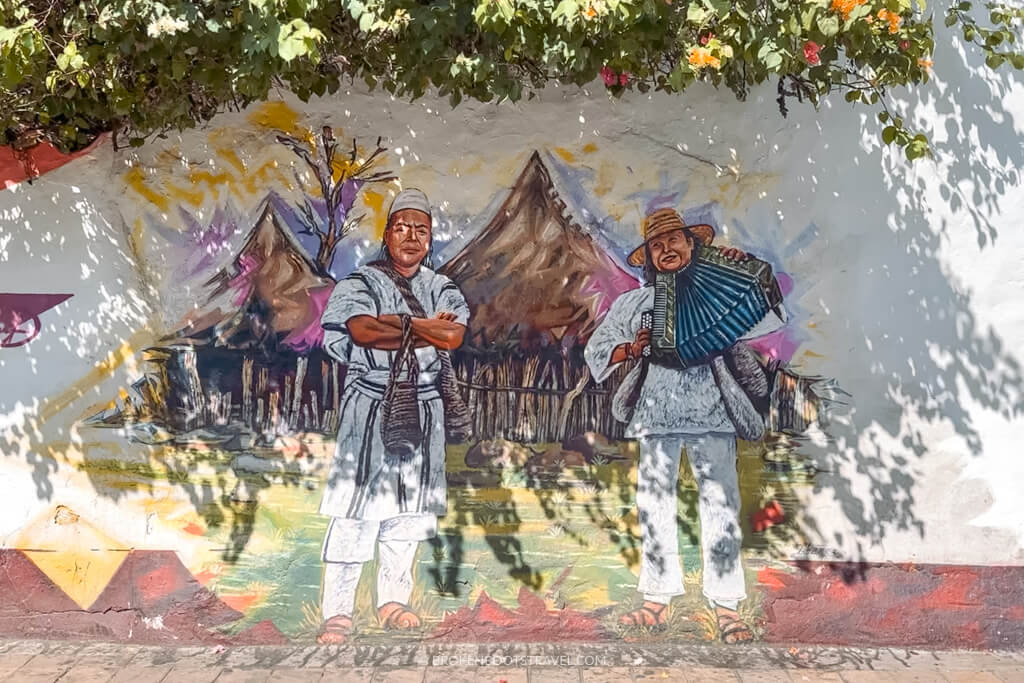
The origins of Vallenato hail from the Colombian coast – in fact, the name Vallenato literally means “born in the valley” in reference to the city of Valledupar.
The musical style originated from farmers, who used to travel through the region delivering messages between towns in the form of songs. The songs would often be accompanied by guitars, and thanks to the high population of indigenous people in the greater Magdalena region, indigenous flutes known as gaitas.
While the Vallenato Festival celebrates the growing global success of the genre, Vallenato was born from, and continues to be, music of the people. It is an intangible part of coastal identity, and is often played at family gatherings and among communities.
While the Vallenato Festival offers a number of organized concerts and events, the celebration is also characterized by Vallenato played in its purest form – on the streets. It’s not uncommon to see street musicians performing on the sidewalks or families gathered for river-side concerts, paying homage to the community aspect that is at the core of the genre.
Elements of Vallenato
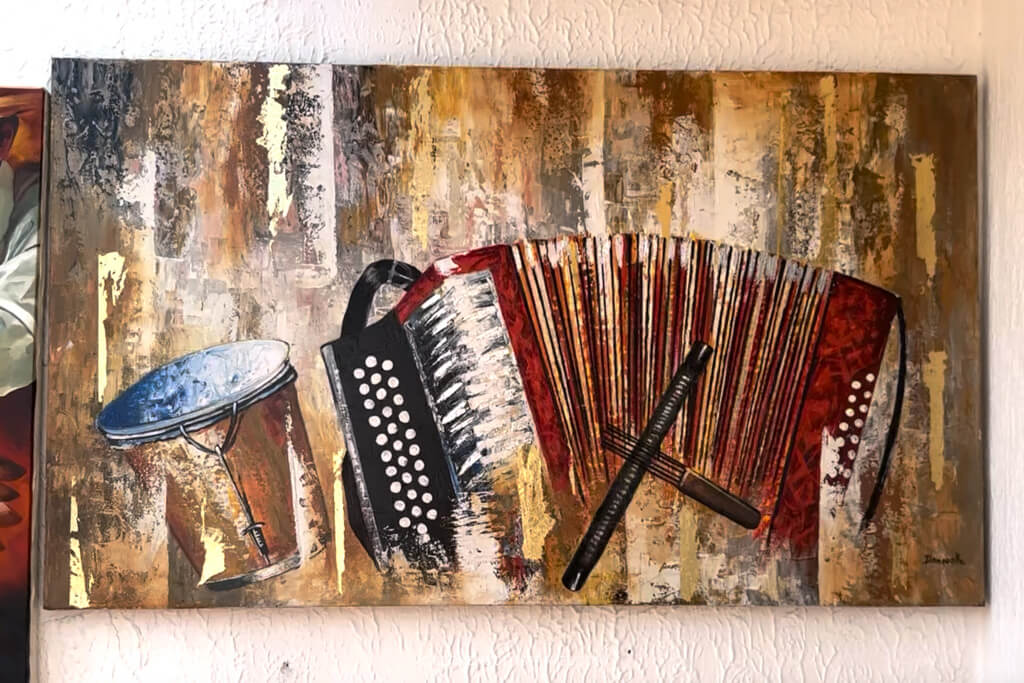
Vallenato music has a distinct sound characterized by three instruments – the accordion, the box drum (caja) and the rasp (guacharaca). The style is so distinct in fact that it was determined a piece of Intangible Cultural Heritage by UNESCO, and represents the diversity of cultures who call coastal Colombia home.
The instruments that represent Vallenato, both past and present, represent the many cultures who call Colombia’s Atlantic coast home – from Spanish origins to afro colombian traditions to indigenous identities. The same is true for the four distinct rhythms, known as “airs” of vallenato.
The four rhythms include son, a slower, more mournful air, puya, the oldest, longest form of vallenato, merengue, a more narrative style, and paseo, the most widely known form of vallenato today.
Vallenato Artists to Know
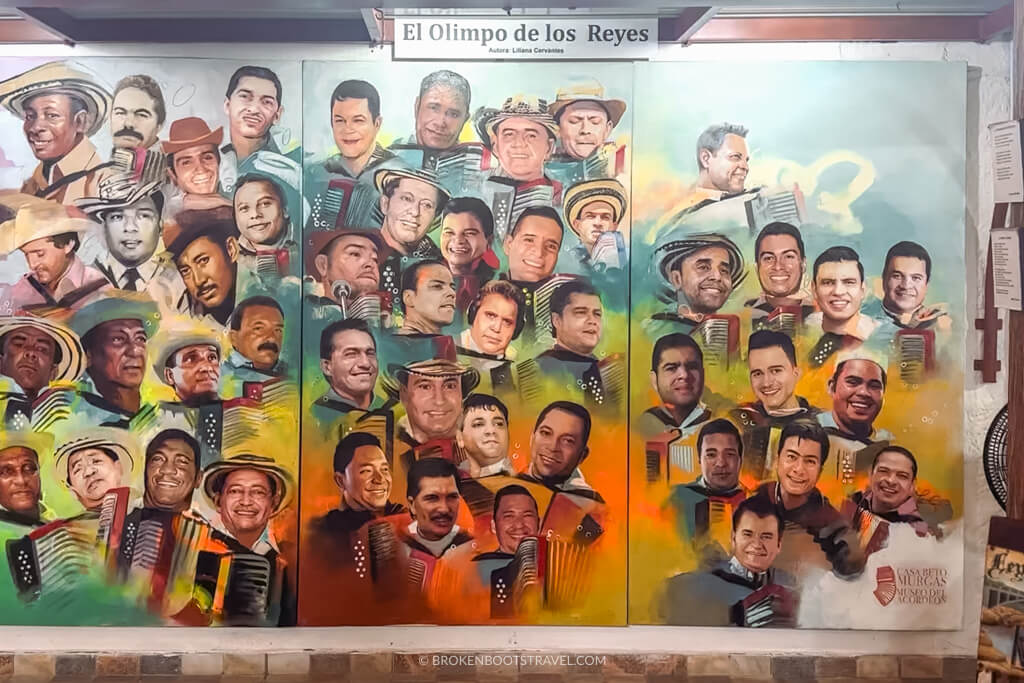
However, if you are to visit the Vallenato Festival, it’s important to know some of the big names in the genre.
Not only will you be able to spot statues of the singers in the Parque de la Leyenda Vallenata, but many artists return to the city of Valledupar for the celebrations, so you’ll have the chance to see them in person. Not to mention, if you’re visiting the Vallenato festival, you’ll be interacting with some of the biggest Vallenato fans in the world – you’ve got to know your stuff!
Arguably the biggest name in Vallenato, considered the reigning king of the genre, is Diomedes Díaz. Díaz actually grew up just outside the city of Valledupar, his childhood home now a site of pilgrimage for Vallenato fans, and is the most decorated vallenato in the history of the genre – exceeding over 10 million sales over his career.
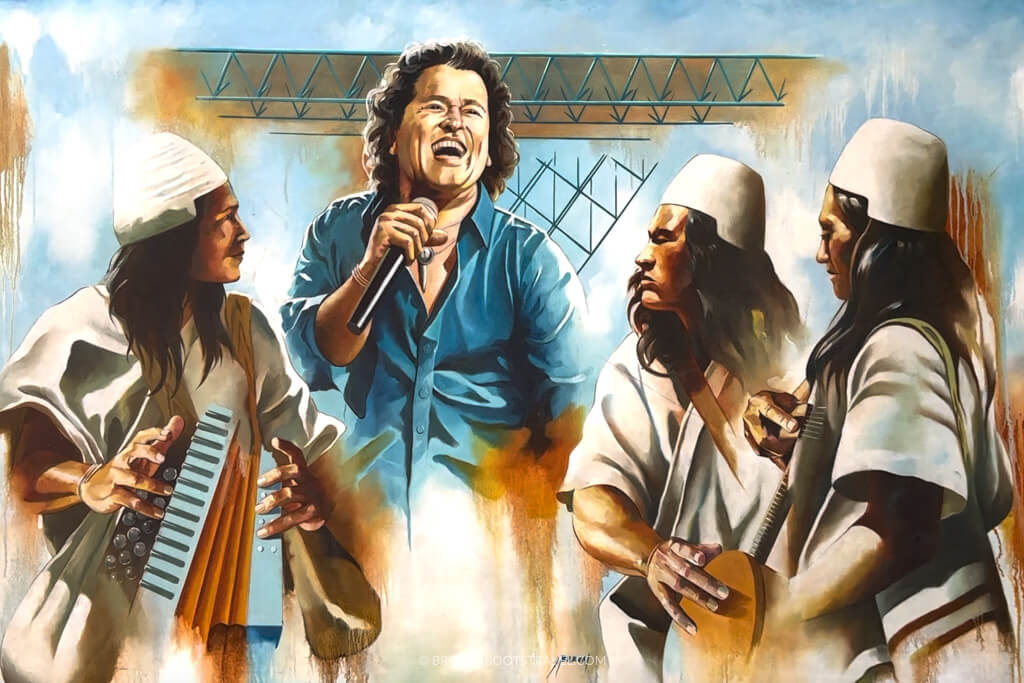
Here are a few other names to know before heading to Valledupar, or check out my article breaking down all the music you should know before a trip to Colombia!
- Iván Villazón – A Valledupar native and world-renowned Vallenato, known as “La Joven Voz Tenor,” or “The Young Tenor Voice” Listen to Iván Villazón.
- Silvestre Dangond – Son of vallenato William José Dangond Banquero and singer of my favorite Vallenato tune, “La Gringa.” Listen to Silvestre Dangond.
- Alejo Durán – The original King of Vallenato, also known as “El Negro Grande” and renowned for his accordion-playing skills. Listen to Alejo Durán.
- Carlos Vives – One of the most notable names in Latin American music, bridging vallenato, cumbia, champeta, and pop. Listen to Carlos Vives.
- José Ricardo Villafañe – The first indigenous King of Vallenato, winning the competition in 2021 and hailing from the Arhuaco tribe
Festival Overview
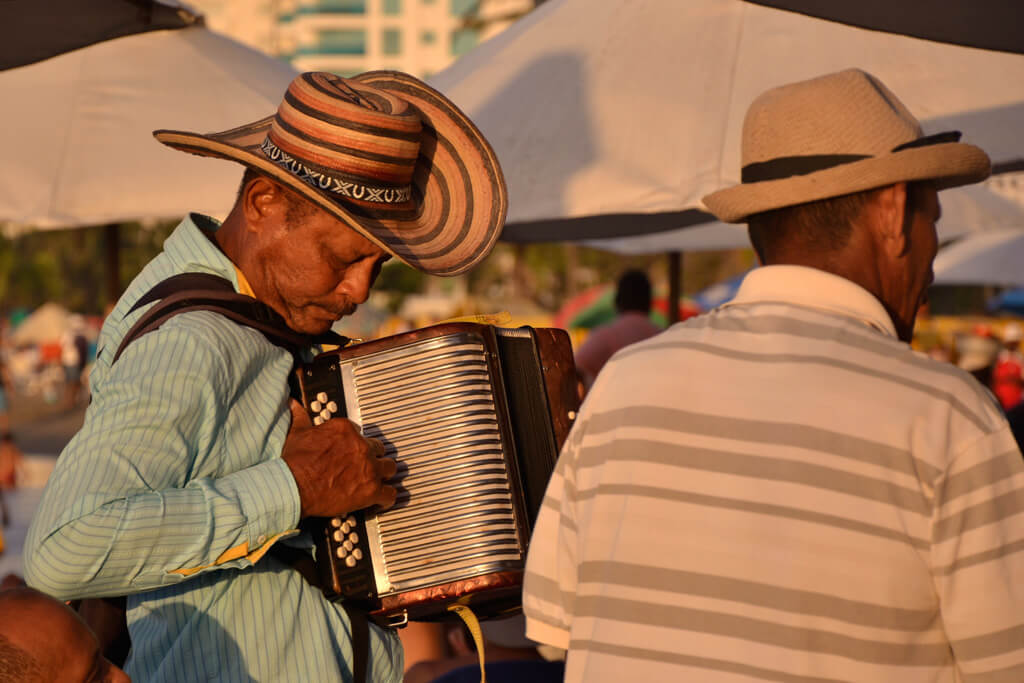
The Vallenato Festival takes place every year at the end of April in the city of Valledupar. You can find information about the next festival on the website for La Fundación Festival de la Leyenda Vallenata.
The festival usually takes place over 5 days, with a number of competitions, concerts, and events taking place throughout the festivities. However, it’s also a gathering of Vallenato fans from around the country, so the music, dancing, and rumba even rival Barranquilla Carnival!
Interested in cultural celebrations in Colombia? Check out this in-depth guide to Christmas traditions around the country!
History of the Vallenato Festival
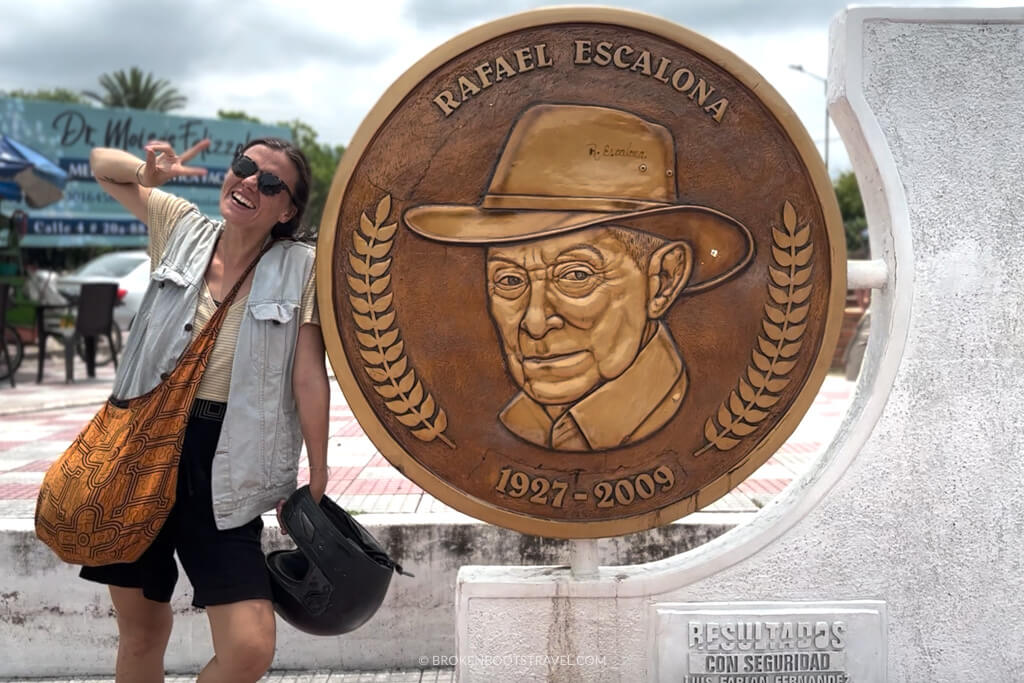
El Festival de la Leyenda Vallenata has been in existence since 1968, when vallenato and then-governor of Cesar Rafael Escalona combined with former Minister of Culture Consuelo Araújo to create a festival for the preservation of the genre. The festival was also created as a celebration of the religious observation of “The Virgin of Rosario.” Since then, the festival has only continued to grow, with the Fundación Festival de la Leyenda Vallenata created in 1986.
The festival has now become one of the most notable events in the country and is integral to the city of Valledupar. Millions of people flock from across the country for the annual celebrations, and many of the most notable names in Vallenato return to the city to perform in the famous Parque de La Leyenda de Vallenata Arena.
But what is the “legend” of Vallenato? The legend developed from the indigenous tribes of the region, specifically their pre-columbian predecessors, the Tayrona people.
The legend says that long ago, an enslaved Tayrona woman named Francisca was punished by her jealous Spanish master. In retaliation, many tribes united to attack the Spanish town, killing many people, but when they tried to attack the temple, the Virgin of Rosario appeared, blocking their arrows with her cape. The natives escaped to the Sierra Nevada mountains, where the Virgin reappeared to them and healed them. Thus, this religious holiday is observed alongside the Vallenato Festival.
Want to learn more about the Tayrona people? Consider a trek to the Lost City, the ancient city of the Tayrona.
Main Events and Activities
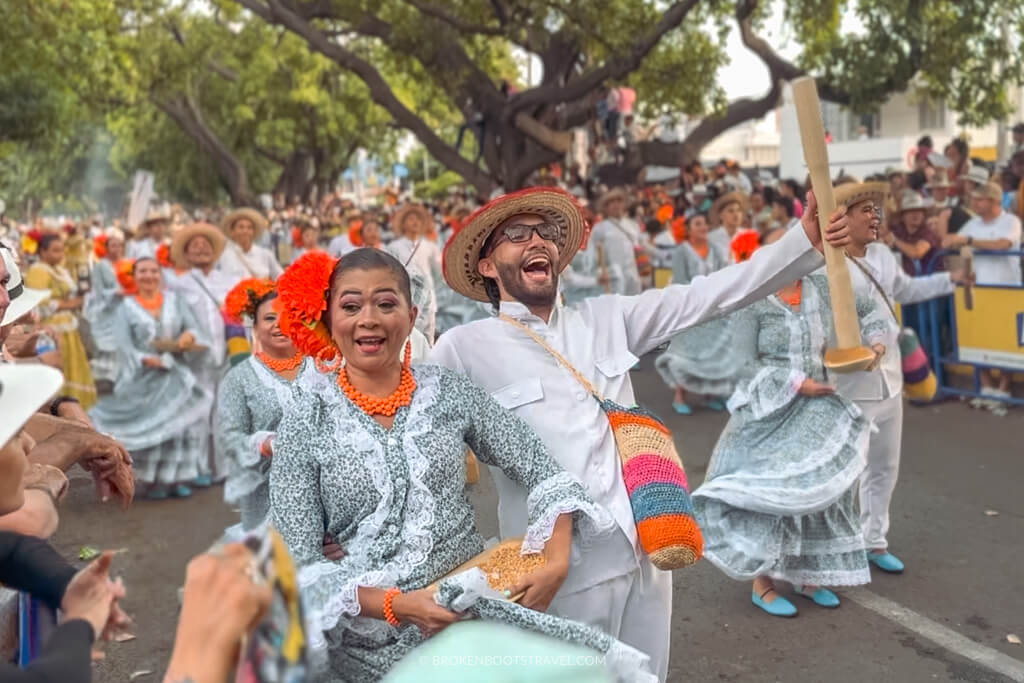
The Vallenato Festival is characterized by a number of events, from concerts to competitions to parades. However, the most important event held during the festival is the vallenato music contest to elect that year’s Rey de Vallenato, or King of Vallenato.
The Rey de Vallenato must possess skills in all four airs of the genre, as well as excel in a number of competitions held throughout the festivities. Besides the official King of Vallenato contest, there are also other contests throughout the festival, such as “best new vallenato song,” “best young accordion player,” and piquerías, or accordion duals.
Concerts and competitions are held at a number of states throughout the city during the festivities. While some are ticketed events – usually the larger names performing at the arena in the Vallenato Legend Park – many of the competitions are free to attend.
The first night of the festival, you’ll also find the Piloneras Parade, a traditional couples dance performed with a mortar and pestle. The dance was actually recovered from extinction due to the Vallenato Festival, and is now one of the most notable events of the celebrations.
The full event schedule can be found on the Vallenato Festival website.
Preparing for Your Visit
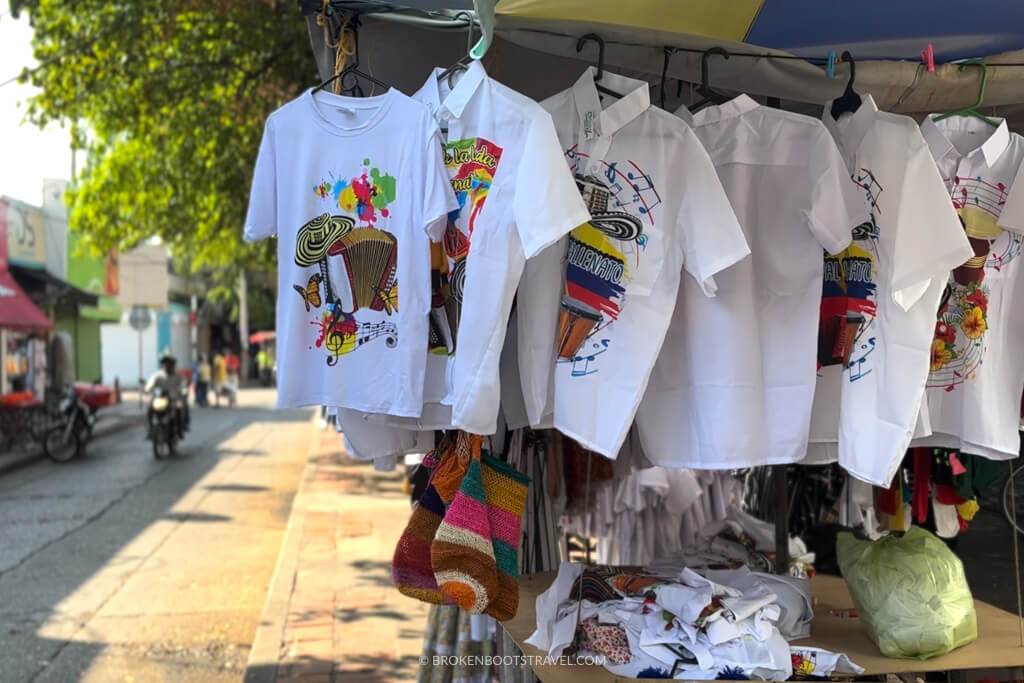
Here’s my biggest tip when planning for the Vallenato Festival – plan in advance! Due to the popularity of this festival around the country, accommodation fills up quickly (and gets more expensive the closer you get to festival dates) so repping your plans months in advance can help you save time and money.
Since the Vallenato Festival is not quite yet a popular activity on the backpacker trail, not a lot of information about the festival can be found in English. I recommend having a baseline knowledge of Spanish to help navigate the festival, or traveling with someone that does, but here I’ll break down everything you need to know to plan your own trip.
Since the festival is such a popular event, it’s also unfortunately a pickpocket’s dream. I recommend investing in an anti-theft bag for exploring the festival, and check out my in-depth safety guide to Colombia to familiarize yourself with other safety concerns.
Where to Stay in Valledupar
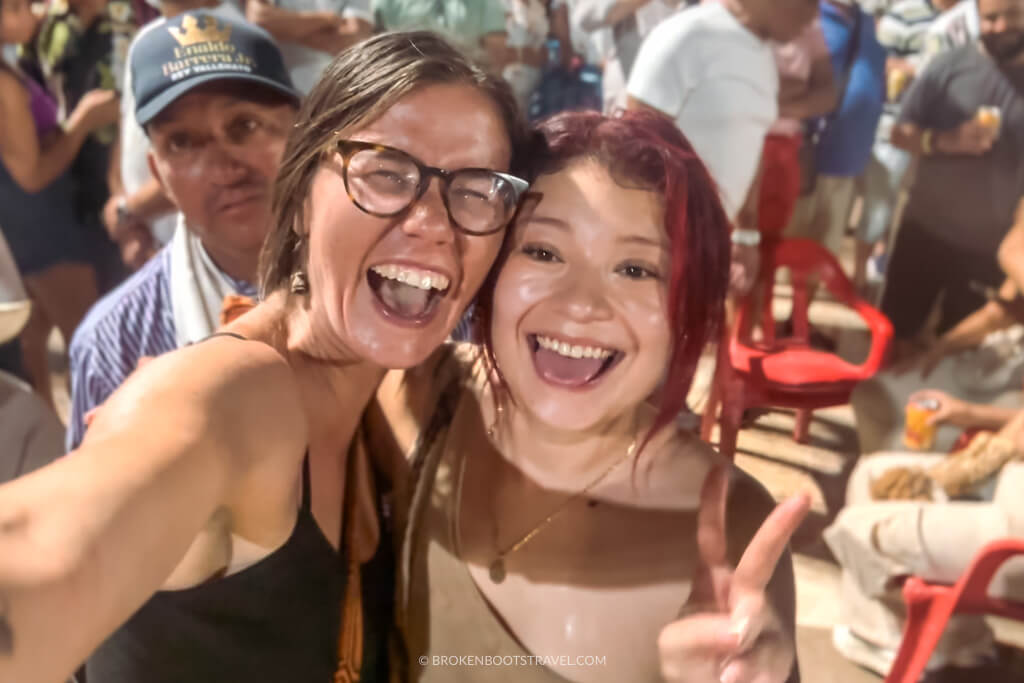
The majority of festival events happen around the Parque de La Leyenda Vallenata, on the north side of Valledupar, and the Plaza Alfonso Lopez in the center of the city. If you want to be close to the action, I recommend staying in one of these areas, though be warned you’ll likely find higher prices, and plenty of rumba well into the night.
🏢 Search for hotels in Valledupar on Booking.com
If you have your own transportation and want to save a little cash, I recommend staying outside the city in a town like Río Seco, Los Corazones, or Planeta Rica. Small guest houses tend to be much more economical, though you’ll often find accommodations quite basic. I stayed with a friend at a guesthouse in Río Seco and we were able to save tons of cash on our trip!
How to Get to Valledupar
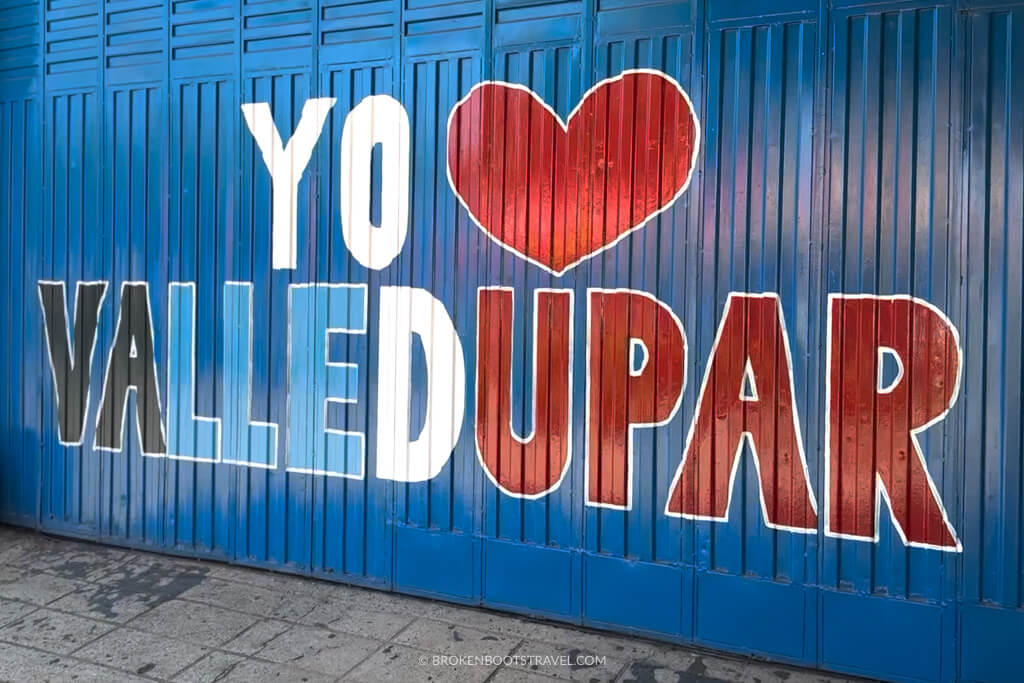
Valledupar is located in the department of Cesar, nestled between the department of Magdalena and the department of La Guajira. While the city is located in the coastal region, it’s actually nestled in the Sierra Nevada Mountain Range, about 2 hours from the nearest coastline.
The nearest coastal city is that of Santa Marta, located about 4 hours by bus from Valledupar. The major city of Cartagena is also located nearby, about 6 hours by bus or a short flight from Valledupar.
Valledupar is also a short flight from any major Colombian city, such as Bogota or Medellín. Buses are also available from either city, but be prepared for a long journey of 15+ hours! I recommend a night bus if you opt for this route.
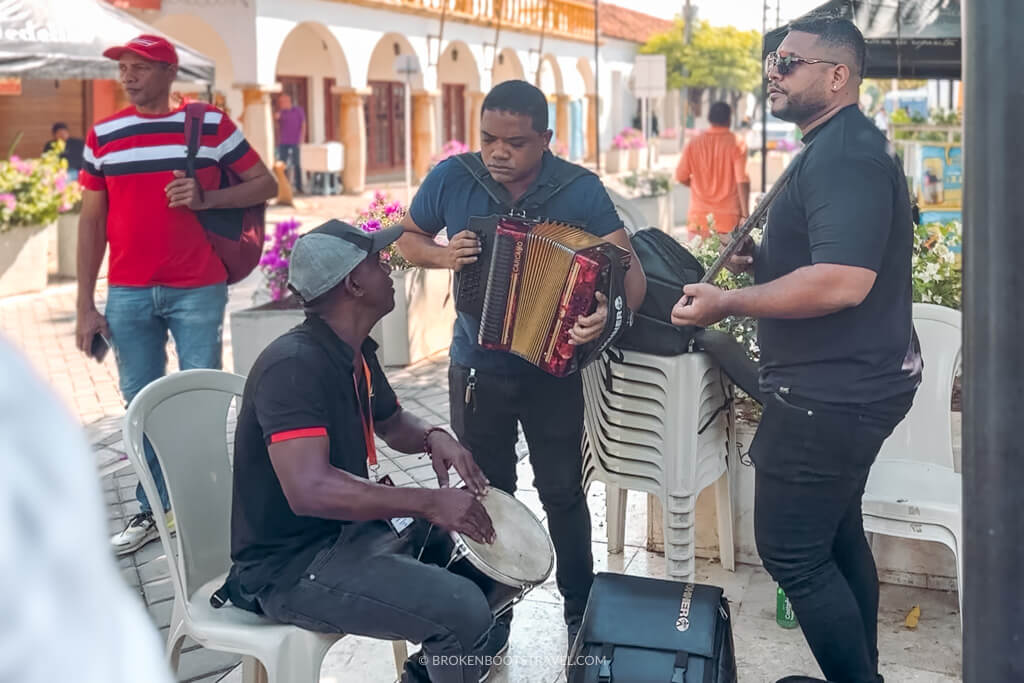
Both motorcycle and regular taxis are common around the city of Valledupar, making it easy to navigate the city even if you don’t have your own transportation. Moto taxis usually cost anywhere from 5,000-15,000 COP ($1-$4 USD), with regular taxis slightly more expensive.
If you have your own transportation, you’ll be able to get around more easily, but parking can be an issue, especially around crowded festival sites. This is easier if you drive a moto, but still be aware of where you’re parking and make sure you haven’t parked in a no-zone, otherwise be prepared to pay a fine!
What To Bring to the Festival
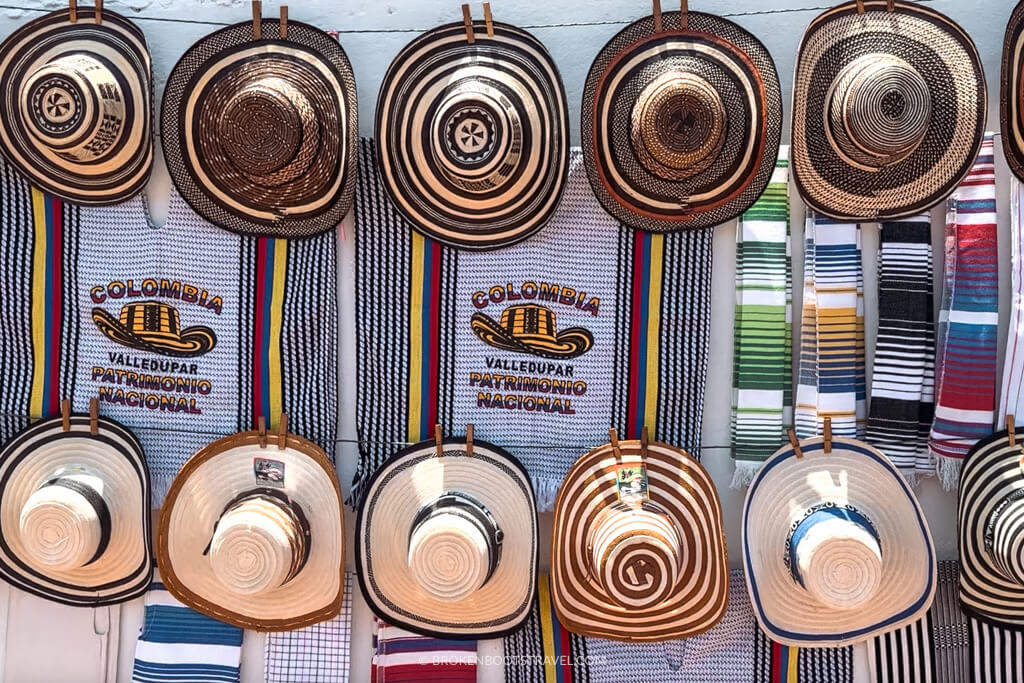
Valledupar is HOT – in fact, it’s the hottest major city in Colombia! Therefore, you’ll want to pack accordingly when planning your trip to the Vallenato Festival, think lightweight clothes and plenty of sun protection.
Speaking of sun protection, you’ll likely see plenty of sombrero vueltiaos around Valledupar, an iconic hat of the Colombian coast. I highly recommend picking one up for the festival, it’s an emblematic Colombian souvenir!
For days out exploring the festivities, I recommend carrying as little with you as possible. Consider leaving your valuables at home, such as your wallet and even your phone, and carrying only what you need when celebrating in large crowds. A water bottle, sunglasses, and good walking shoes can also be essential for a day of celebrations.
Beyond the Vallenato Festival
Valledupar is much more than the Vallenato Festival, but the city truly comes alive during the celebrations. Located in the valley of the Sierra Nevada Mountains, it’s one of the most beautiful cities in the country, with corners lined with mango trees and colonial architecture at every step.
Many of the festival events take place nearby the Plaza Alfonso Lopez, the central plaza of the city of Valledupar. The surrounding neighborhood is great for exploring – consider taking a walk over to the picturesque Cañahuate neighborhood, you’ll even spot a mural by my friend Onaiber Ibañez!
🎶 Don’t want to explore alone? Check out this guided tour of historic Valledupar with a local!
Other Things to do in Valledupar
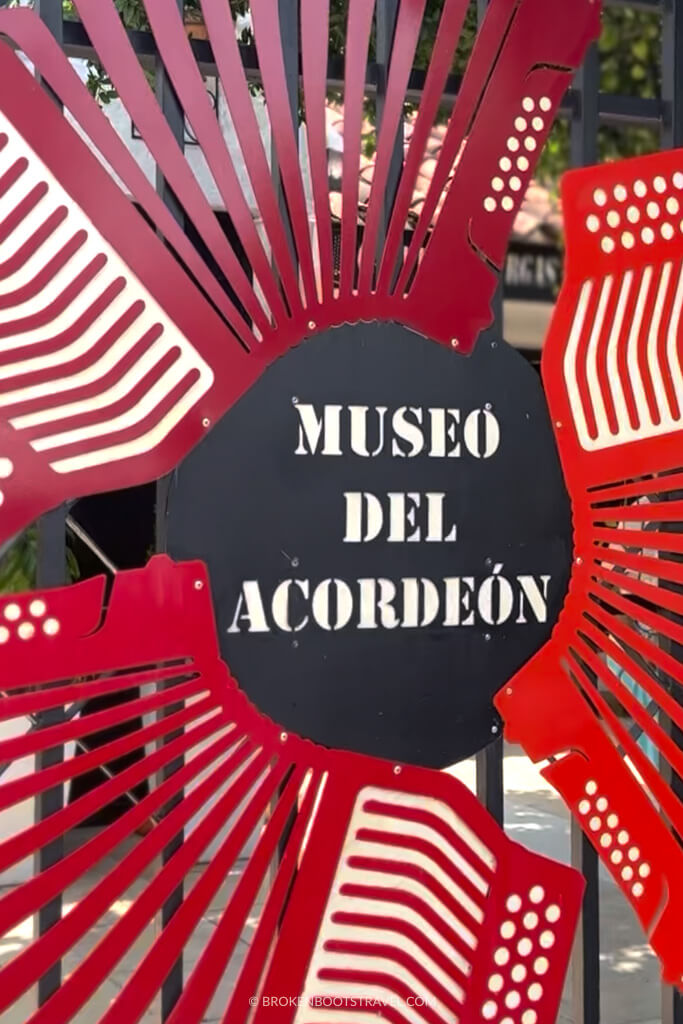
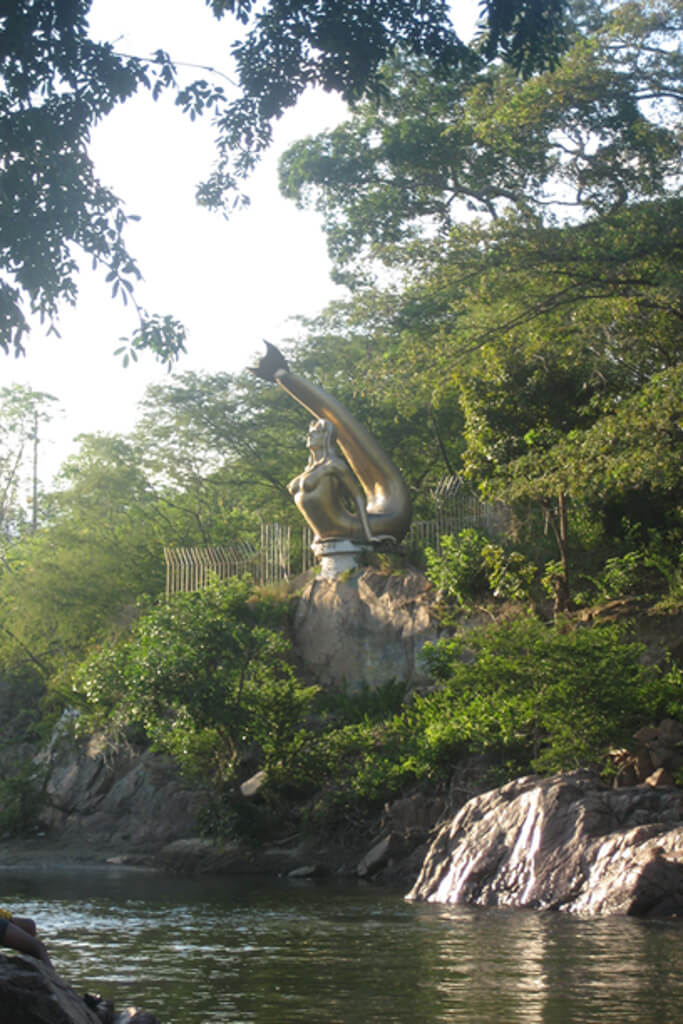
There’s plenty to do both inside and outside the city limits of Valledupar, especially if you’re curious to learn a little more about Vallenato history! Here are some of my favorite things I explored on my visit to the festival.
Río Guatapuri – This river outside of Valledupar is a hotspot year-round, but especially during the Vallenato festivities! The banks are lined with street vendors selling everything from pan de bono to arepas de huevo, and visitors can enjoy a soak in the river while listening to the many Vallenato trios playing along the banks. Keep an eye out for la sirena, the gold mermaid who overlooks the river!
Casa Beto Murgas Accordion Museum – Want to learn more about the history of the accordion? This house-turned-museum is home to one of Valledupar’s most notable vallenatos, who has dedicated his home to the preservation of numerous accordions. Visitors are invited to come and learn about the instrument and the history of the genre at the museum.
Casa Museo Diomedes Díaz – The home of Vallenatos most notable name has now become a site of pilgrimage for many people who visit Valledupar. Located about an hour outside the city in the town of La Junta, the former home of Diomedes Díaz is one of the best places to learn about the genre – and see a few of his awards on display!
Want to learn more about the landscapes and stories of Valledupar? Check out this extensive tour, visiting many of the sites listed above!
Explore the Colombian Coast
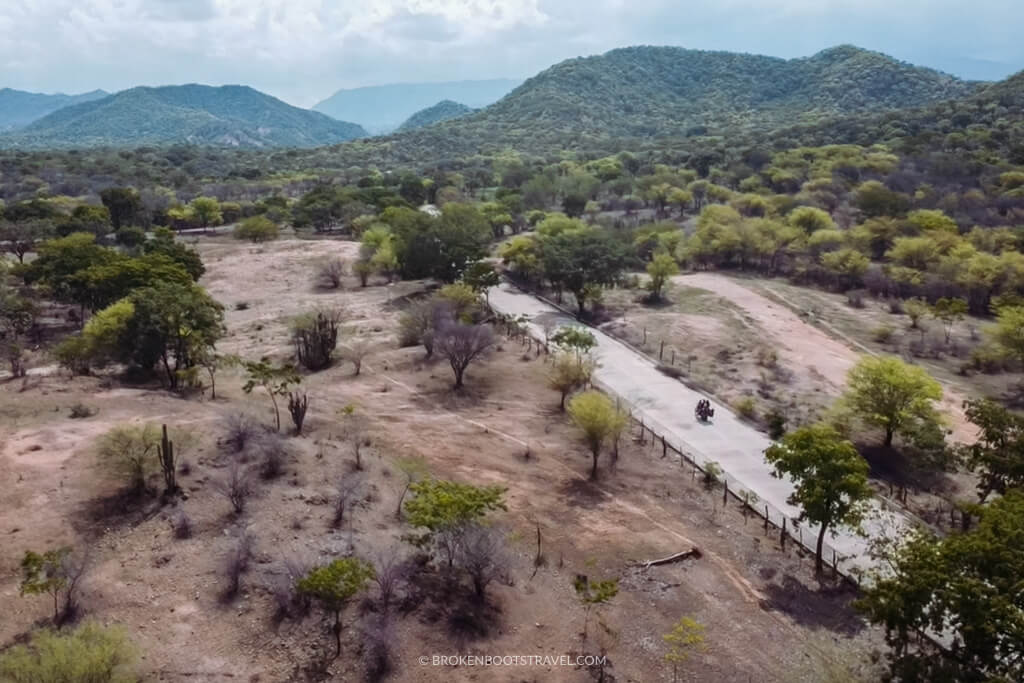
While there’s plenty to do and see near Valledupar, Colombia’s Caribbean coast is a hotspot of culture, history, and nature. I’ve actually written an entire week-long itinerary for the region, so if you’ve got more time to spend, that’s a good place to start!
However, Valledupar is also a great jumping off point for some of the best adventures in Colombia. It’s a great place to begin a trip to the desert department of La Guajira or catch a flight to the Caribbean island of San Andres. You might also consider it a stopping point on your way to colorful Cartagena or the seaside city of Santa Marta.
One of the most notable things about this region is the influence of indigenous cultures in the Sierra Nevada. Nearby Pueblo Bello is a major village of the Arhuaco people, as well as one of the best places to taste Colombian coffee (besides the coffee region of course!) This day tour of the village gives you the opportunity to learn more about the indigenous culture of the region, and taste the famous coffee while you’re at it!
Why Visit the Vallenato Festival?
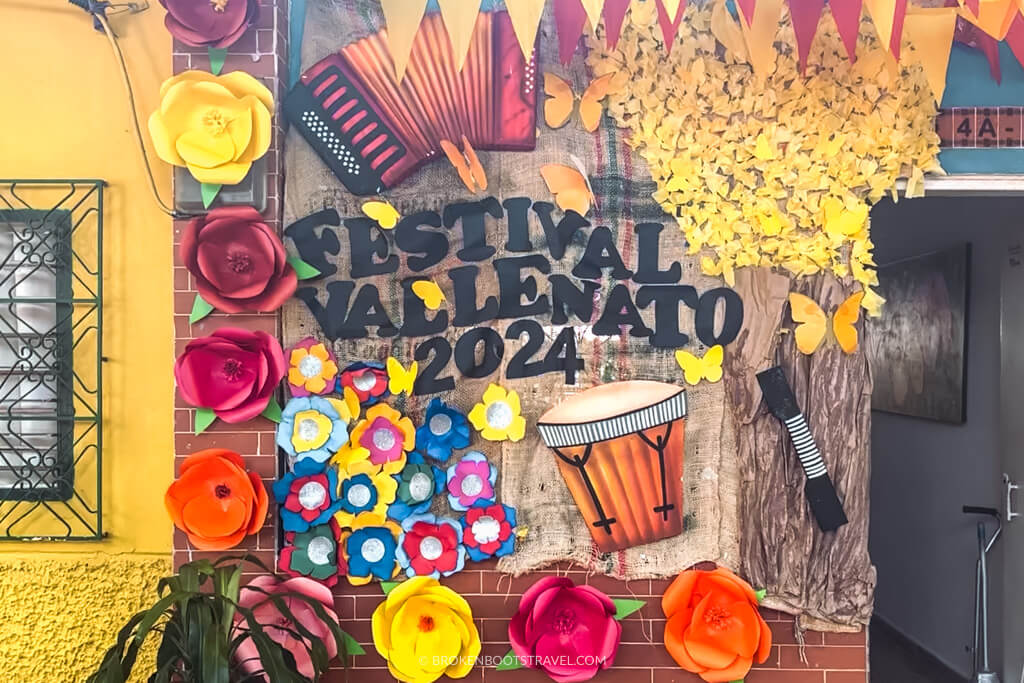
The Vallenato Festival is undeniably one of the biggest cultural events of the year in Colombia, and one of the best ways to get an authentic taste of costeño culture. It’s still a bit off the gringo trail, meaning it’s a great way to connect with the local culture and people.
Whether you already identify as a Vallenato fan or are just beginning your musical journey, it’s truly a sight to see as Vallenato fans pour in from around the country. But hey – even if Vallenato isn’t your thing, there’s still plenty more to be seen in Colombia! If you’re looking for more rumba, consider a trip to Colombia’s salsa capital of Cali, or spend a week among the lush landscapes of the eje cafetero. Whatever brings you to Colombia, you’re sure to find it, and more, in this extraordinary country.
Have you been to the Vallenato Festival, or plan to visit? Let me know what you thought of this unique thing to do in Colombia!
What to Pack for Colombia
Planning a trip to Colombia? Consider adding some of these essentials to your suitcase for a truly epic trip!
💧 Filtered Water Bottle – Save on the single-use plastic and protect from parasites!
🧥 Heavy-Duty Rain Jacket – For the ever-changing Colombian weather!
🎒 Anti-theft Backpack – Perfect for exploring big cities or trekking in the jungle
🧖♀️ Microfiber Travel Towel – A go-to travel essential anywhere in the world!
🔌 Portable Charger – Keep your phone charged out on the go
🔐 Mini Padlock – Perfect for securing your backpack or locking up your items at the hotel
🔋 Universal Travel Adapter – Charge all your devices anywhere in the world!
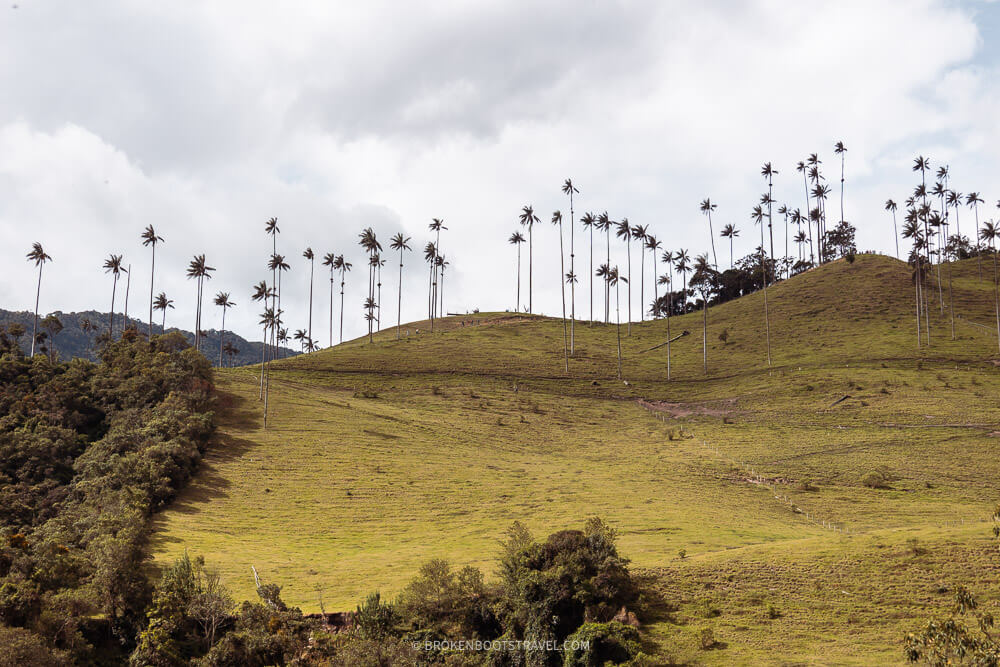
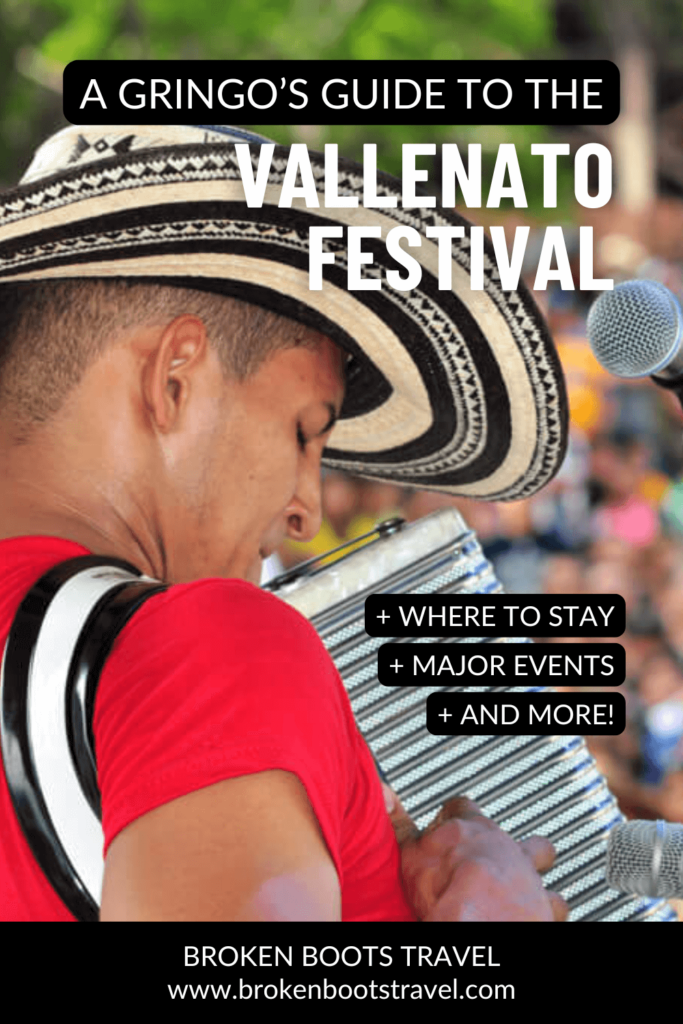
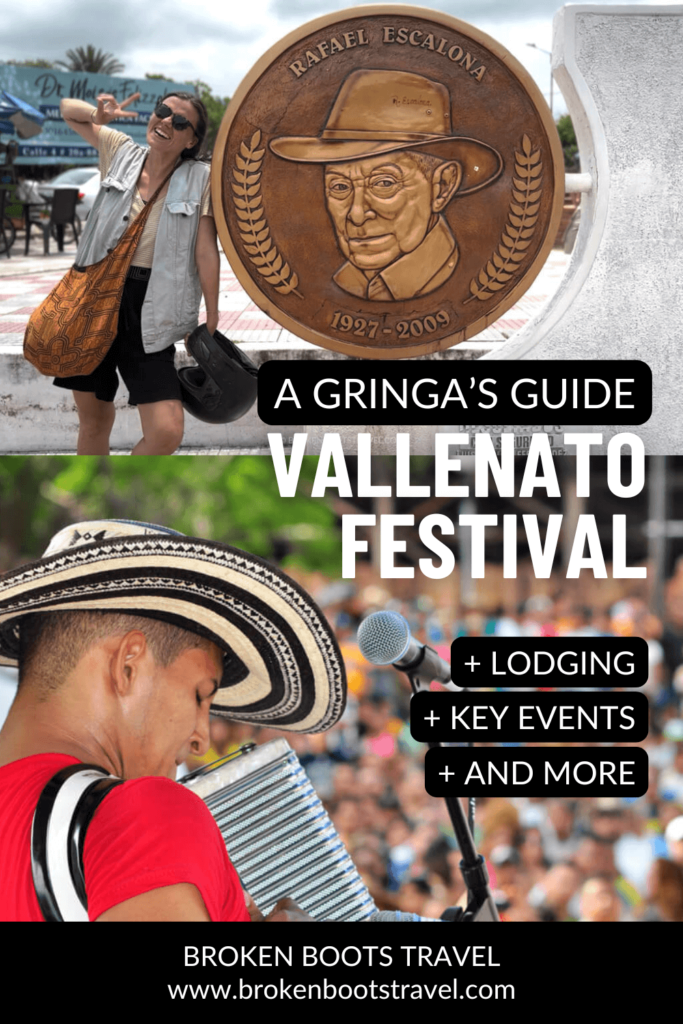
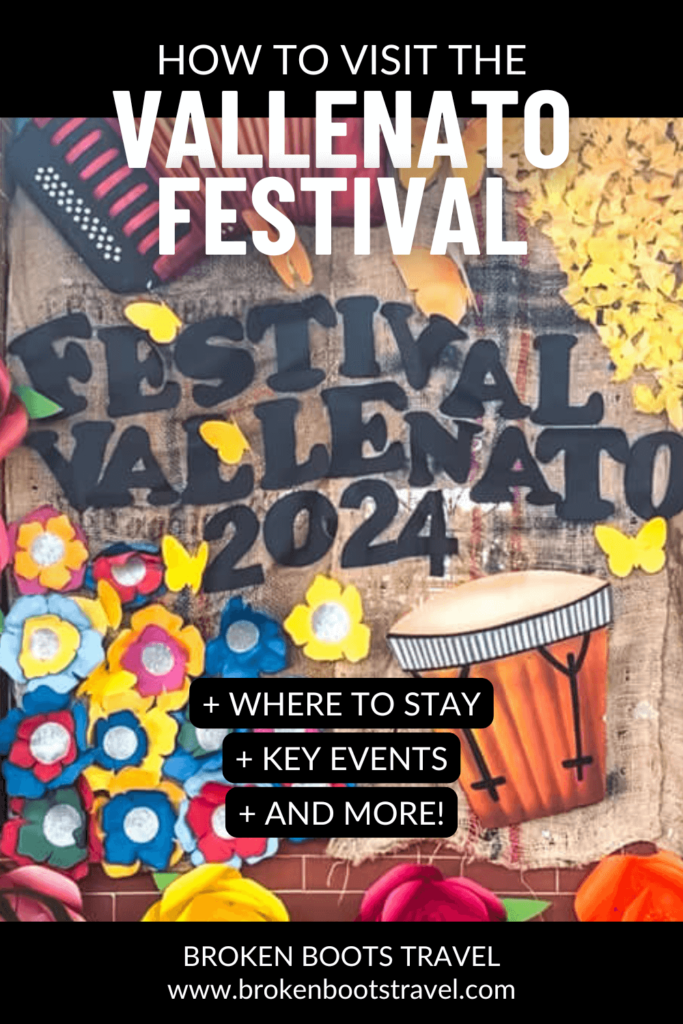
Love stories? Subscribe to my newsletter to get my latest updates delivered straight to your inbox every month. One email a month + no spam? Sign me up!
Virginia Taylor (Ginna) is a travel writer and photographer exploring the world until her boots wear through. She’s currently on a mission to explore all 32 departments of Colombia, though she formerly called the Middle East home. Want to know more? Visit the About Page.
Pingback: A Tourist's Guide to Barranquilla Carnival
Keep working ,impressive job!